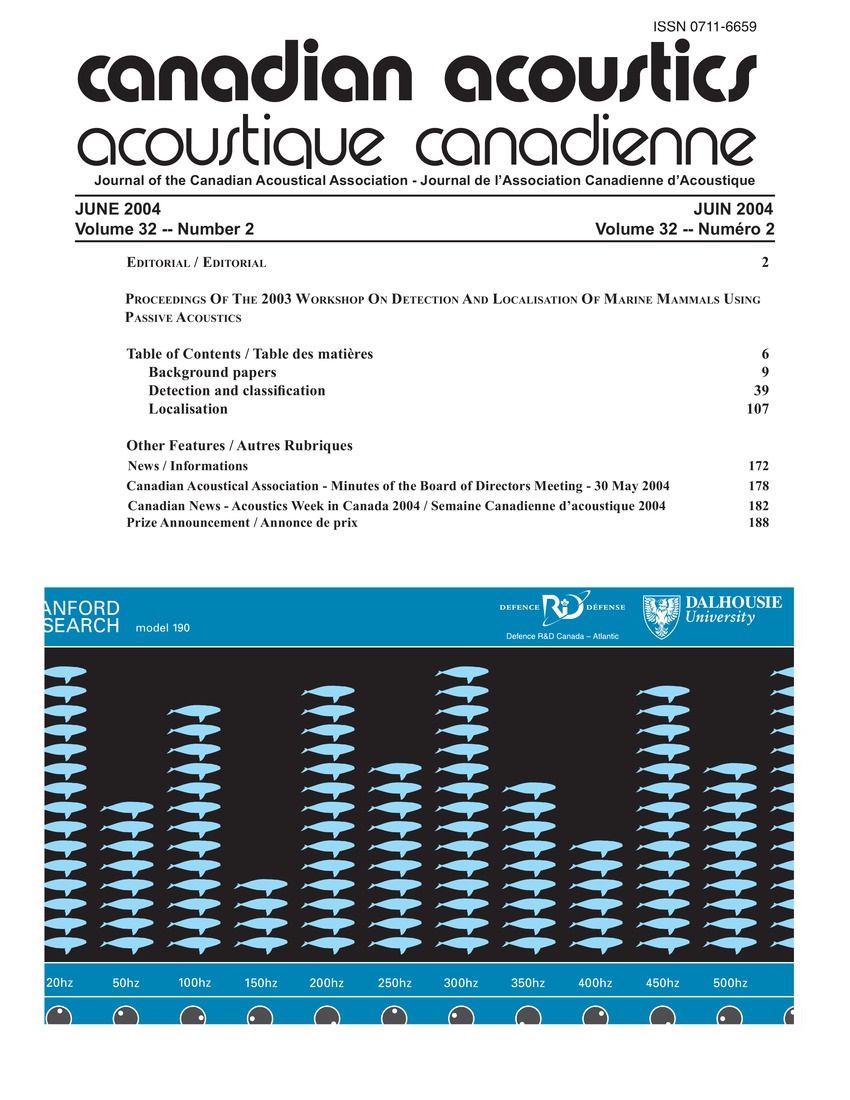Detection and classification of marine mammals using an LFAS system
Keywords:
Acoustic waves, Detectors, Fisheries, Problem solving, Signal theory, Sonar, Low frequency active sonar (LFAS), Marine mammals, Plot structures, Submarine echoesAbstract
World wide a concern is emerging about the influence of man-made sound in the sea on marine life, and particularly about high power active sonars systems. Most concern lies with marine mammals, which fully depend on sound in their natural behaviour (foraging, navigation and communication). One of the sonars under debate is the Low Frequency Active Sonar (LFAS). This type of system is designed for long range detection of submarines. It consists of a powerful source and a towed array receiver. Incidents with marine mammals could be avoided if the receiver that is dedicated to detection of submarine echoes, is equipped with Detection, Classification and Localisation capabilities for marine mammals as well. In this paper the development of a prototype transient detector and classifier for the TNO-FEL LFAS array (named CAPTAS) is described. A broadband beamformer is developed that creates 8 beams (sectors) that are equally wide over the whole frequency band. A multi-beam LOFAR display is presented. On the normalised data a Page's test detector is applied that is "optimum" for signals with unknown duration. Detected transients are sent to a classifier that tries to discriminate between biological and man-made or natural transients. Time-frequency analysis is performed and in the resulting time-frequency plot structures are determined by means of cluster analysis after which the sound is classified. Detection results of the prototype are very good, the Classification module is under development and the Localisation module is part of future research. Part of this research is sponsored by the Royal NetherLands Navy (RNLN).Additional Files
Published
How to Cite
Issue
Section
License
Author Licensing Addendum
This Licensing Addendum ("Addendum") is entered into between the undersigned Author(s) and Canadian Acoustics journal published by the Canadian Acoustical Association (hereinafter referred to as the "Publisher"). The Author(s) and the Publisher agree as follows:
-
Retained Rights: The Author(s) retain(s) the following rights:
- The right to reproduce, distribute, and publicly display the Work on the Author's personal website or the website of the Author's institution.
- The right to use the Work in the Author's teaching activities and presentations.
- The right to include the Work in a compilation for the Author's personal use, not for sale.
-
Grant of License: The Author(s) grant(s) to the Publisher a worldwide exclusive license to publish, reproduce, distribute, and display the Work in Canadian Acoustics and any other formats and media deemed appropriate by the Publisher.
-
Attribution: The Publisher agrees to include proper attribution to the Author(s) in all publications and reproductions of the Work.
-
No Conflict: This Addendum is intended to be in harmony with, and not in conflict with, the terms and conditions of the original agreement entered into between the Author(s) and the Publisher.
-
Copyright Clause: Copyright on articles is held by the Author(s). The corresponding Author has the right to grant on behalf of all Authors and does grant on behalf of all Authors, a worldwide exclusive license to the Publisher and its licensees in perpetuity, in all forms, formats, and media (whether known now or created in the future), including but not limited to the rights to publish, reproduce, distribute, display, store, translate, create adaptations, reprints, include within collections, and create summaries, extracts, and/or abstracts of the Contribution.


